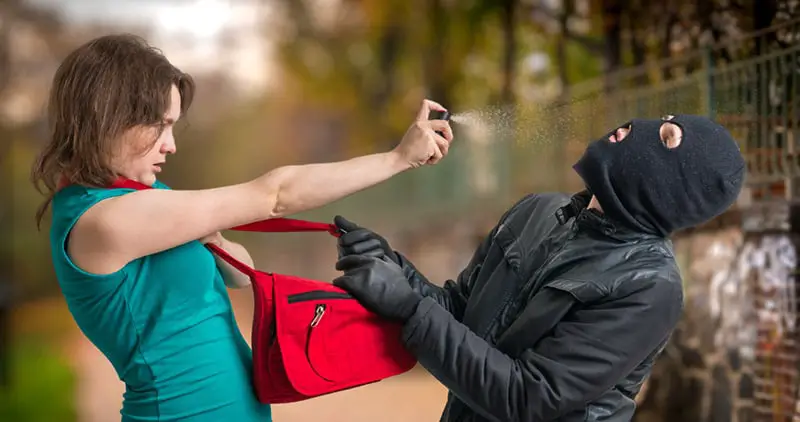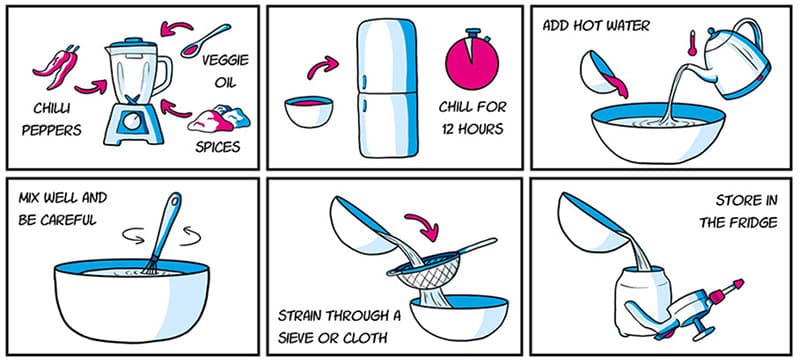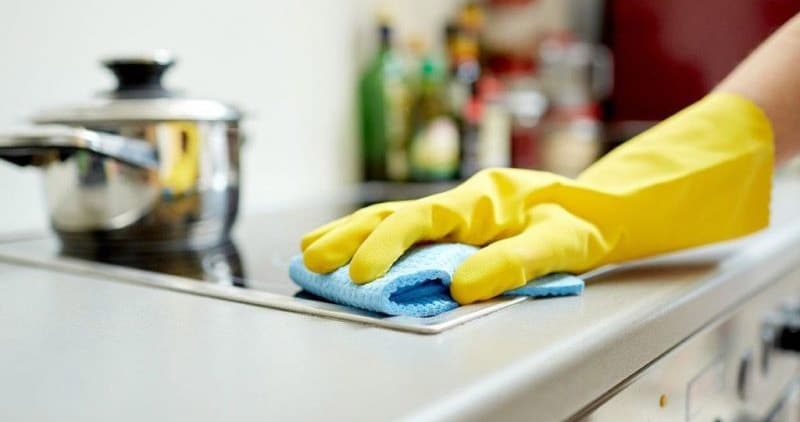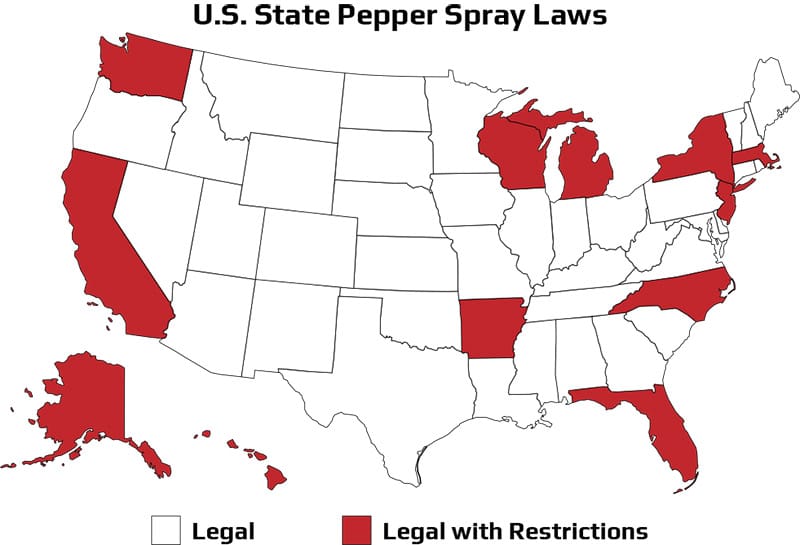As you probably already know, it is better to be safe than sorry.
Because of this, manufacturers of the modern world have developed several self-defense devices to empower everyone who feels unsafe alone. The most popular one? None other than pepper spray.
Making one is easier and cheaper than you think. Even people who don’t know how to make pepper spray can create one. If you are one of them, consider this your ultimate guide.
| Quick Navigation About Pepper Sprays Types of Pepper Sprays Pepper Spray for Self-Defense Treatment Making Pepper Spray At Home Protective Measures How To Make Pepper Spray Tips for Use Conclusion |
About Pepper Sprays

Pepper spray is a non-lethal self-defense weapon. However, that doesn’t mean that it doesn’t have any kick!
Even though it often comes in a tiny spray bottle for convenience, it contains a high amount of Capsaicin, the same chemical found in hot peppers.
Initially, the police used this for crowd control and policing, but later it became banned for that purpose.
Now, it’s considered a self-defense weapon for everyone. This does not only work for humans but on dogs and bears as well.
Most sprays stick to a 5-10% capsaicin concentration – higher than chili peppers themselves. Take note that the higher the concentration is, the longer the ‘heat’ lasts.
To give you a better idea, imagine accidentally rubbing your eyes while slicing chili peppers – but ten times worse. Absolute nightmare.
Types of Pepper Sprays
You’ve got a plethora of pepper spray options to choose from. So what happens is that sometimes, it can be overwhelming to pick one unless you’re well-rounded in their differences and your needs.
If you want one that doesn’t look like pepper spray, then pick one that can be concealed in unique everyday items. Things like rings, keychains, pens, and more!
Let’s walk through the three main types of pepper spray products:
- Fogger
With a range of 4 to 8 feet, pepper spray foggers work best during warm weather. This is because it emits extremely fine droplets that can easily be blown away by strong wind. Worst case scenario, you might find yourself a victim of your own device.
- Stream
A pepper spray stream is a lot more efficient than foggers. Its reach goes up to 20 feet, and has no risk of being blown away. However, it’s unsuitable in closed spaces, since it cannot protect you from inhaling the chemical and stray splashes.
- Gel
Indoors, pepper spray gels work the best. It can easily jump to 25 feet and when sprayed, and instantly sticks onto your attacker’s skin. No risk of accidentally spraying yourself whatsoever!
There are other types of pepper sprays as well. For example, we also have animal sprays. This is often used to defend yourself against violent dogs, lions, or wolves. In some places, it’s called a ‘bear spray’.
Pepper Spray for Self-Defense

Although pepper sprays are non-lethal, they still cause significant damage when used.
For instance, spraying someone’s eyes forces that person to close them immediately, followed by immense ‘boiling’ pain, and temporary loss of eyesight that could last 10 to 30 minutes depending on the quality of the spray – just enough time to run from a dangerous situation.
Here are some other possible effects of pepper spray:
- Wheezing
- Throat burn
- Gagging
- Chest pain
- Fainting
- Difficulty in breathing
- Dizziness
- Burns (with skin contact)
The pain usually dies down after around 30 minutes of hell if left as is. However, for people with existing lung complications, the coughing effect and breathing difficulties may persist for long hours. Extreme exposure may lead to serious cases like cyanosis, and other skin injuries.
Treatment
Since pepper spray exposures don’t usually run longer than 30 minutes nor does it cause permanent damage, there is no specific treatment for it. However, there are several ways to speed up relief:
- Move to a well-ventilated area
- Wash the affected area. Avoid soap around the eyes!
- Remove clothing that has remnants of the spray particles
Several popular relief methods include using milk, baby shampoo, and saline solutions. However, studies show that both aren’t any better than water. So it’s best to stick to rinsing it with water and waiting for the pain to pass.
Making Pepper Spray At Home
If you’re a handy-dandy person and are more interested in the idea of creating your own homemade pepper sprays, then you’re at the right place.
Here, we’re going to talk about how to make pepper spray at home.
Of course, you can easily buy ready-made sprays. In fact, there are tons of good yet cheap ones available.
However, nothing beats the security of knowing that you won’t run out of your own supply because you know how to make pepper spray solutions. Not to mention, the assurance that you used the hottest pepper available!
Protective Measures
But before you jump right into it, keep in mind that you’re making pepper spray that can potentially harm you.
Thus, you’ll need to gear up and choose an isolated area to set up. Otherwise, you and your family might get exposed to harmful chemicals and suffer the effects firsthand.
Here’s a quick checklist of the protective gear you’ll need:
- Safety goggles
- Rubber gloves
- Protective mask
How To Make Pepper Spray

As soon as you’re confident that you and your family are as safe as possible, then it’s time to prepare all of the ingredients you will need. Most of these can easily be found in your kitchen, so you don’t have to worry about spending too much!
Main Ingredients
- 6 chili peppers (highly recommended) or 2 tablespoons chili powder
- 1 bulb of garlic / 2 tablespoons crushed garlic
- Vegetable oil (e.g olive oil) / baby oil
- Black pepper
- Rubbing Alcohol (highly recommended) or Water
- Soap (optional)
- Lemon (optional)
Equipment Needed
- Mixing bowl
- Aerosol container or spray bottle
- Funnel
- Oven or Dehydrator
The main ingredient of the pepper mixture is the dried hot peppers or chili powder. So if you want to have a pepper spray that actually lasts long, then you’ll need to have a good eye out for the spiciest one available.
Fortunately, you can always refer to the Scoville Scale to measure the heat units in a certain type of chili pepper. The higher the heat unit, the more effective it is.
Cayenne peppers are good but not as effective. But if you have a red Savina habanero sitting somewhere then lucky for you, it’s the hottest pepper there is!
Step-by-Step Process
At this point, if you already have everything you need from protective gear down to ingredients, then it’s time to get into action. Carefully follow the step-by-step guide below and surely, you’ll have your own pepper spray in no time!
- Dry your peppers in an oven or a dehydrator. Skip if you’re using chili powder.
- Chop or grind the dried chili peppers and pop them into a small container.
- Grab your bowl and add the dried chili peppers or chili powder, black pepper, and alcohol until it’s completely submerged and stir. You may use water as a substitute for alcohol.
- Pour in either baby oil or vegetable oil and mix well. The oil will allow the mixture to thicken enough to stick onto the attacker.
- Add lemon or soap for extra strength. (Optional)
- Seal the mixture with a plastic cover and let it sit overnight.
- The following day, transfer the pepper spray mixture into your aerosol or spray bottle. Make sure to choose a spray bottle with a long-range. You can use a funnel or strainer to do so.
- Close the lid, and voila! You’ve successfully made your own pepper spray.
On the other hand, if you’re a bit doubtful or scared of the process, then you are always free to search up some stores that offer good quality pepper sprays. No pressure!
Clean-up Process
Aftercare is just as important as the DIY pepper spray process, and that’s because water will not be enough to wash away the ‘heat’ that is stuck in your work area.
As mentioned, Capsaicin is a type of oil. Hence, you’ll need to whip up a strong cleaning solution for the equipment you used.

For your bowls and mixing tools, clean them off with a bleach and water solution (Make sure to keep your protective gear on!) and set it aside for 30 minutes.
Don’t forget to clean your workplace as well, and dispose of your protective gear properly instead of directly throwing them off the bin. Chances are that stray dogs or other people may get a whiff of the chemicals, and we don’t want that.
Storage and Shelf Life
If you plan to make several bottles of homemade pepper spray, then proper storage is vital to prevent accidents.
Make sure to keep these out of the reach of children if you have any, and preferably, keep them in a cool place. If stored properly, it has a shelf life of 3 months to a year.
However, pepper spray solutions may lose their touch if not used for a long time, so we highly recommend that you mix up a new solution after three months. You never know when you’ll need a self-defense weapon after all!
Tips for Use
If possible, we hope that you never get to ever use your pepper spray. But since we don’t know when danger strikes, it’s best to stay prepared at all times.
In line with that, we’ve rounded up some helpful tips on how to use your homemade pepper spray effectively and safely.
- Keep one close to you all the time, especially if you often walk out alone. You can hang it as a keychain or right inside your bag.
- When spraying, point your spray downwind to keep the wind from blowing it back to you.
- Stay as far from the attacker as possible. If they get close, don’t think twice about spraying.
- Aim for the attacker’s eyes, nose, or mouth.
- After spraying, run and yell for help. Do not look back until you are safe and keep the pepper spray close.
- Be familiar with how far your spray can reach. This helps you know when to use it best.
- If you get exposed to the spray as well, wash off the affected area with water and wait for the pain to pass.
- Consider getting another self-defense weapon aside from the spray just in case. You can try to get a taser, or hornet spray.
- If you want to practice spraying, make sure that you’re alone and the nozzle is facing the other way.

Pepper spray is legal in all states, but that doesn’t mean that you can use it however you want. You should only use pepper spray for self-defense as cautiously as possible.
Never spray it during a petty fight or as a joke as it can lead to several issues, and possibly jail time. Yikes.
Conclusion
Safety doesn’t need to be expensive. On the contrary, it’s easy to make homemade pepper spray right in your kitchen if you just follow the proper procedure and safety measures. Not to mention, guides on how to make pepper spray are everywhere!
Always remember, getting yourself pepper sprays or any self-defense weapon is not about being paranoid. Instead, this is a smart way to protect yourself from dangers that may come your way in the future.
What matters the most is that you’re safer, stronger, and braver than ever!
